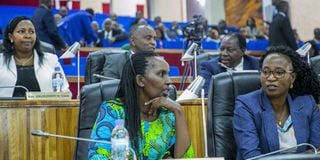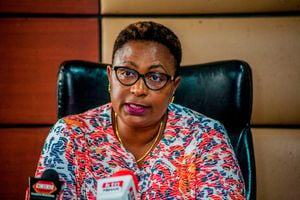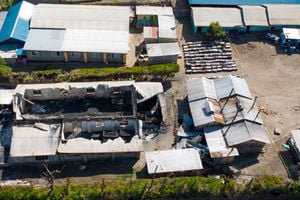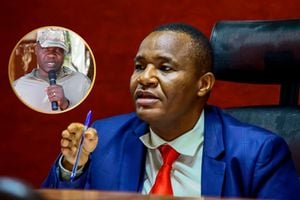What Kenya can learn from Rwanda, South Africa on increasing women MPs

In addition to big numbers of women in decision-making organs, Rwandan women in the government do not seem to have been relegated to traditional women’s positions.
What you need to know:
- The Inter-Parliamentary Union’s global rankings of women’s parliamentary representation, these results keep Rwanda in first place in the world.
- In Kenya, women still account for less than a third of the legislature.
On July 15, Rwandese went to the polls to elect leaders who would represent them in the next five years. The outcome of the election was sweet music to women as they floored men at the ballot.
The parliamentary elections reaffirmed Rwanda as a global leader in women’s representation. Over 200 women candidates ran for 80 parliamentary seats and 51 women won seats, making the House of Deputies (the lower house of the bicameral national legislature of Rwanda) a women-majority chamber, with nearly 64 per cent women MPs.
According to the Inter-Parliamentary Union’s global rankings of women’s parliamentary representation, these results keep Rwanda in first place in the world. So what can Kenya that has been grappling with implementing the two-thirds gender rule learn from the two countries? We look at some of the strategies employed by the two nations to register such a high number of women in leadership.
Rwanda rose from the ashes of the 1994 genocide and implemented political reforms meant to empower previously marginalised groups and prevent history from repeating itself. These reforms place women at the forefront of the country's rebuilding.
Rwanda’s 2003 constitution, revised in 2015, stressed the importance of gender and ethnic equality, mandating 30 per cent reserved seats for women in all decision-making political positions, including in both chambers of parliament.
The constitution also defines Rwanda’s voting system; the country combines direct and indirect elections to elect the House of Deputies (lower house) members. It uses an open-list proportional representation voting system to elect 53 members (24 women members are elected through an electoral college that includes electors from all of Rwanda’s provinces and the City of Kigali), the National Youth Council elects two members, and the Federation of the Associations of the Disabled elects one member.
The government has also established several government bodies and organisations to empower women’s political, economic, and social equality, eliminate gender-based violence, build women’s capabilities, and monitor the country's progress.
These organisations include the Ministry of Gender and Family Promotion, Rwanda Women Parliamentary Forum, National Women’s Councils, the Gender Monitoring Office, National Gender Cluster, Gender Focal Points, and Isange One-Stop Centre.
As a result of the gender quota implementation, women’s representation in Rwanda’s House of Deputies jumped from four per cent in 1994 to 49 per cent in 2003. The combination of a proportional voting system and a reserved seat gender quota has been attributed for Rwanda’s continued increase in women's representation.
The quota system does not only apply to elective positions but also applies to the cabinet. Women exceeded the quota and achieved a representation of 63.2 per cent in 2014, 50 per cent in 2018, and 41 per cent in the current cabinet.
In South Africa, the general election conducted in June saw more than 43 per cent of the newly elected MPs being women.
A total of 174 women were elected to the National Assembly, representing 43.5 per cent. In the May 29 elections, women’s representation in South Africa, however, dropped from 46 per cent in 2020 to 43 per cent.
As a result, South Africa has dropped from 12th to 22nd place in the global ranking of women’s political participation. In the Southern African Development Community (SADC) region, South Africa drops from first to third place, with Namibia leading the way, followed by Mozambique.
The watershed 2024 election was the most contested since the advent of democracy 30 years ago, when the ruling African National Congress (ANC) won 63 per cent of the vote.
As predicted, the party lost significant ground, attaining just 40 per cent of the vote and losing its outright majority for the first time since it came to power in 1994.
Parties win seats in proportion to the percentage of votes that they garner. Parties that alternate women and men candidates on their list (sometimes referred to as the “zebra” system) ensure women’s equal representation.
Women now comprise the majority of the ANC parliamentarians, at 53 per cent. The Economic Freedom Front (EFF), which broke away from the ANC, also surpassed the 50 per cent mark, with 54 per cent of its parliamentarians being women.
Five smaller parties have 50 per cent or more women. These include Patricia de Lille’s Good Party, Build One South Africa (Bosa), African Transformation Movement (ATM) and the Patriotic Alliance (PA).
The two main opposition parties, the Democratic Alliance (DA) and Jacob Zuma’s uMkhonto weSizwe Party (MKP), have 32 and 34 per cent of women. The Inkatha Freedom Party (IFP) has 29 per cent women in parliament.
Namibia in March this year finally reached 50/50 gender equality in the National Assembly, thanks to various political parties implementing 50/50 gender equality in their leadership structures.
Statistics by the country’s National Assembly indicate that out of 104 members, there are indeed 52 male and 52 female parliamentarians.
The data further show that all political parties with more than one representative in parliament have at least one-woman parliamentarian.
Kenya has for decades been grappling with enhancing women's political participation. This push was amplified by the New Constitution 2010 that introduced the two-thirds gender rule.
The rule mandates the state to take steps to ensure that not more than two-thirds of members of all elective and appointive positions are of the same gender.
However, the rule dilemma has stalked the tenth, 11th, 12th and the current parliaments with all their four attempts to operationalise the rule failing to find a solution.
Women’s representation in parliaments worldwide has increased slightly from 26.5 per cent to 26.9 per cent this year.
These statistics were collated after over 60 parliaments in 52 countries held their parliamentary elections in 2023. Sub-Saharan Africa accounts for the third-highest at over 27 per cent.
Faith Kasiva, former Gender Secretary, says what is needed in Kenya is political goodwill to help realise the gender rule.
“We need political leadership to marshal the numbers in Parliament to pass legislation on gender rule,” said Ms Kasiva.
Currently, the Kenyan Parliament is only composed of 23 per cent women. The Cabinet, ministries and parastatals still do not comply with the gender rule.





